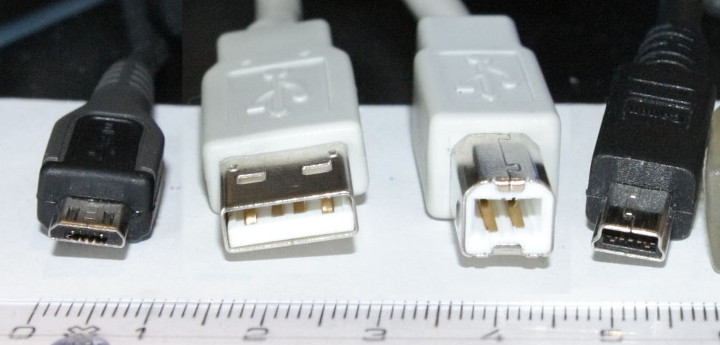One Port to Rule Them All: USB Type-C and the New Macbook
13 Mar 2015
While the rest of the world spent Monday afternoon gawking at Apple’s $17,000 watch, it was the company’s other new release that caught my eye. The new Macbook sports an improved keyboard and trackpad, a 12-inch screen, and a $1,549 (CAD) base price. More interesting than what it’s gained, though, is what it’s lost: besides being thinner and lighter than the 11-inch Macbook Air, the new Macbook has slimmed its port count down to two. The headphone jack remains, but USB, Thunderbolt, and even the MagSafe charging port have all been axed and replaced by a single new port, alone on the left-hand side of the machine. It’s called USB type-C, and it’s going to be everywhere soon.
What’s so important about another new cable, you ask? For starters, it’s reversible, which means you’ll never need to jam the connector in the port to figure out whether or not it’s upside down. It’s capable of running a 5K (!) display on its own. It can transmit enough power to charge all but the beefiest of gaming laptops. And it does all this in a package slightly larger than a Lightning or micro-USB, which means it can be everywhere from printers and desktops all the way down to phones and wearables. It’s not hard to see how important USB type-C is once you realize just how many different connectors it’ll make obsolete.

If you look at the picture above, you’ll see that the USB type-A cable has four gold contacts; two are used for power while the other two transmit data. This physical layout hasn’t changed once, even though USB transfer speeds are hundreds of times faster than they were when the cable was designed twenty years ago. Drawing on twenty years’ worth of engineering advances, efforts to similarly future-proof the type-C cable have resulted in a smaller, more robust connector which houses no fewer than twenty-four contacts.
With all the extra hardware, the new plug’s capabilities far surpass those of the old. One new party trick is type-C’s ability to transmit large amounts of power and data at the same time — in opposite directions. Consider this scenario: you have an external monitor on your desk at home, plugged in to a wall outlet. When you connect your dying laptop to the monitor at the end of the day, the USB type-C connector will provide you with an additional display while simultaneously charging your laptop. If that isn’t the future, I don’t know what is.
Of course, there has to be a drawback. USB type-C isn’t backwards-compatible with any existing USB connectors, which means we’ll have an awkward phase of adapters reigning supreme while everyone transitions over to the new connector. Until then, I foresee myself having to clarify “no, the reversible one, not that one” plenty of times when asking a friend if they have a USB cable on them. Considering the future benefits, this is a small price to pay for the new connector’s future-proofing.
For now, other USB port types will continue to exist. Along with its two type-A ports, the Chromebook Pixel 2 has one type-C port on each side of its case and a power brick with a type-C cable. The reason for this, which is so obvious that I’m ashamed I didn’t catch it, is so you can plug the power cord into either side depending on which is more convenient for you. Once other laptop manufacturers start to copy this layout, you might never be irritated by a power cable again.
Instead of all the cables you have laying around, imagine a future where all you’ll need is a few double-sided type-C cables, maybe with an adapter thrown in. Perhaps the Lightning port will go the way of Thunderbolt, making the next iPhone the first of its kind to house a USB port. The true promise of USB type-C is that it’ll eventually be able to replace everything.
The only exception? That damn headphone jack.